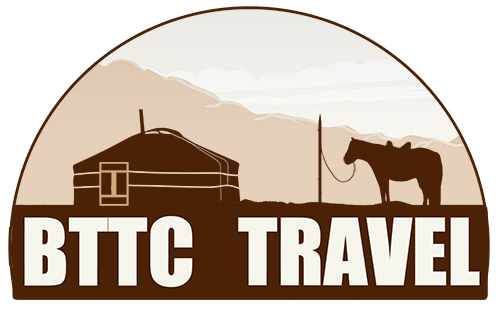Before you visit MONGOLIA
Accessibility
Weather/ Best time to travel
Visa information
Vaccination
Mongolian embassies abroad
While you are in MONGOLIA
Cinema
Cinema arrived in Mongolia in the 1910s, captivating audiences in the capital city where the first screenings took place at the American Consulate and Russian Stock Exchange hotel. By 1913, Mongolian prince Namnansuren brought films from Russia to showcase at Bogd Khan’s residence, marking the beginning of film culture in Mongolia.
After the 1921 revolution, Mongolia invested in cinematic equipment and trained students in Russia, making films more accessible to the public. Known initially as “Shadow Shows” and offered free of charge, cinema quickly grew in popularity. In the 1930s, the first theater, “Ard,” opened, and in 1935, with Soviet support, the Mongol Kino production company was established. Its first release, a documentary titled Celebration of 1st May, set the stage for Mongolia’s cinematic journey.
By the late 1930s, Mongolian filmmakers began producing movies independently, with Norjmaa’s Way (1938) and Wolves (1939) marking their early successes. The iconic director D. Jigjid brought Mongolian cinema international recognition with classics like People’s Messenger (1959). Following Jigjid, a new generation of filmmakers—H. Damdin, B.Baljinnyam, and others—propelled Mongolian cinema forward, each contributing unique visions.
The 1990s saw a cinematic renaissance, with over 20 private studios emerging and producing more than 100 films. Mongolian cinema expanded internationally through collaborations with French, Japanese, and Chinese filmmakers, with these joint productions gaining recognition at global festivals. This vibrant history underscores Mongolia’s dynamic journey in cinema, from “Shadow Shows” to an internationally celebrated film industry.
Fine Art
Mongolian fine arts are renowned for their rich heritage, spanning from ancient cave paintings to masterpieces in classical painting. The oldest known artwork in Mongolia, the Khoid Tsenkher cave paintings in Khovd, date back 3,000 to 8,000 years, revealing Mongolia’s early connection to visual storytelling.
Mongolian art flourished with the rise of the Mongol Empire in the 12th century, blending local styles with influences from other cultures. The empire’s capital, Kharkhorin, became an architectural marvel, reflecting the grandeur of the Mongolian Empire. From the 16th to the early 20th centuries, as Buddhism spread, religious arts and temple-inspired architecture grew, with beautiful monasteries showcasing intricate designs that embodied Mongolia’s spiritual heritage.
Modern Mongolian painting also shines with iconic works such as U. Yadamsuren’s The Old Horse-Fiddler, A. Senghetsokhio’s The Mongol Lady, B. Avarzed’s Uurgach, and Ts. Minjuur’s Caravan Guide. These classic pieces capture the heart of Mongolian culture and nomadic life, continuing a legacy of artistic excellence. Discover Mongolia’s remarkable art—a fusion of ancient tradition, imperial majesty, and vibrant cultural expression.
Modern Fine Art
Following the 1921 Revolution, Mongolia embraced a new social system that prioritized the arts, inspiring artists to capture the spirit of change and progress. Mongolian artists began blending traditional methods with European styles, creating a unique fusion in Mongolian art. Specialized institutions were established to nurture artistic talent, and by the 1950s, a range of fine arts genres, including carpet weaving and porcelain-making, were flourishing.
During this period, artists like O. Tsevegjav, U. Yadamsuren, and N. Tsultem became renowned for their depictions of animals, workers, history, and everyday life, while architect S. Choimbol gained fame for his striking monuments. In the 1960s, Mongolian art underwent a transformation as artists explored new techniques, colors, and themes. The 1970s and 80s introduced masters like D. Amgalan in xylography and G. Soosoi in monumental arts, expanding Mongolia’s artistic landscape.
The arrival of democracy in the 1990s opened new doors for Mongolian artists, providing opportunities to study abroad and experiment with abstract and impressionist styles. Today, Mongolian art is a vibrant blend of traditional heritage and global influence, offering visitors a unique insight into Mongolia’s dynamic cultural evolution.
Painting
Mongolian painting has roots stretching back over two thousand years, beginning with ancient rock drawings. By the 8th century, Uighur paintings show that art was thriving in Mongolia and across Asia. As Buddhism spread, it became a central theme in Mongolian art, inspiring beautiful and intricate religious paintings. A key figure in modern Mongolian art, B. Sharav bridged traditional and contemporary styles with his iconic works like One Day in Mongolia, vividly depicting Mongolian life.
European influence later enriched Mongolian painting, giving rise to celebrated artists such as L. Gavaa, O. Tsevegjav, and Ts. Dorjpalam. Known both in Mongolia and internationally, these painters played a vital role in blending traditional techniques with modern approaches, training generations of new artists along the way.
Today, Mongolia’s art scene is vibrant and evolving, with young artists experimenting with diverse styles while staying rooted in national tradition. For those drawn to the richness of cultural heritage and the innovation of modern art, Mongolian painting offers a unique and captivating experience.
Sculpture
Ancient deer stone carvings stand as remarkable historical monuments across Mongolia, showcasing the early skill and depth of Mongolian sculpture. These carved stones reveal a thriving art culture that flourished in ancient times. In the 17th century, the renowned sculptor and spiritual leader Undur Gegeen Zanabazar laid the foundation for Mongolian sculpture with his creation of the 21 Taras (consorts of Buddha), capturing the grace and beauty of the Mongolian woman in exquisite form. His work pioneered a tradition of honoring the human form in Mongolian art.
Today, sculptors like S. Choimbol, A. Davaatsren, N. Jambai, and L. Dashdeleg carry on this legacy, enriching Mongolia’s artistic landscape. Among the most iconic works is S. Choimbol’s monument to D. Sukhbaatar—a symbol of Mongolia and a striking portrayal of the Mongolian horse-rider that leaves a lasting impression on visitors.
As Mongolia’s art scene continues to evolve, a new generation of artists is poised to add their voices to this centuries-old tradition, creating sculptures that celebrate Mongolia’s history and cultural heritage. Discover the legacy of Mongolian sculpture—a blend of ancient artistry and modern expression that continues to captivate and inspire.
